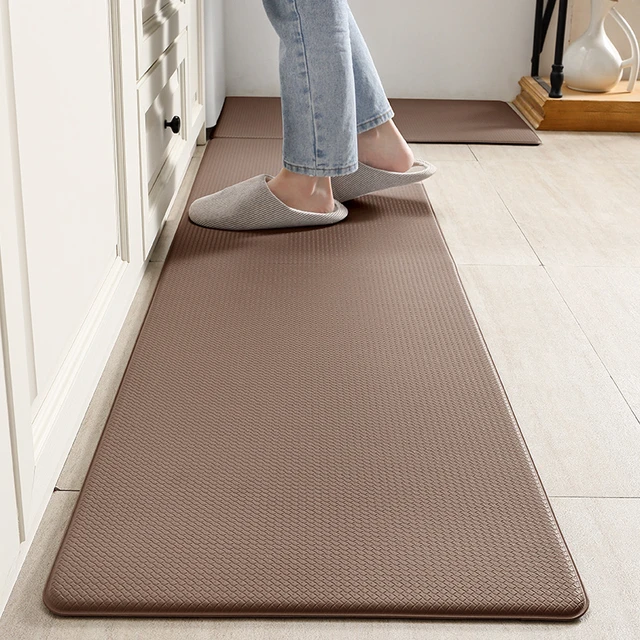 Introduction:
Introduction:
Spending long hours in the kitchen can take a toll on your feet, legs, and back. With hard flooring surfaces, discomfort and fatigue become evident. Gel kitchen mats, with their soft and cushioned texture, provide an effective solution. In this comprehensive guide, we will explore the features, benefits, and considerations of gel kitchen mats. Whether you’re a seasoned chef or simply enjoy cooking at home, this guide will help you understand why gel mats are an excellent addition to any kitchen.
Understanding Gel Kitchen Mats
Soft and Cushioned Support:
Gel kitchen mats are designed with a soft, gel-filled core that provides excellent support and cushioning to relieve pressure on your feet, legs, and back.
The gel material molds to the contours of your feet, offering personalized comfort.
Anti-Fatigue Properties:
Gel mats have anti-fatigue properties that reduce discomfort and pain associated with prolonged standing.
They can help improve blood circulation, reduce muscle fatigue, and alleviate joint stress.
Slip-Resistant and Durable:
Gel kitchen mats often feature a slip-resistant surface that enhances stability and safety in the kitchen.
They are designed to withstand heavy foot traffic, resist stains, and endure daily wear and tear.
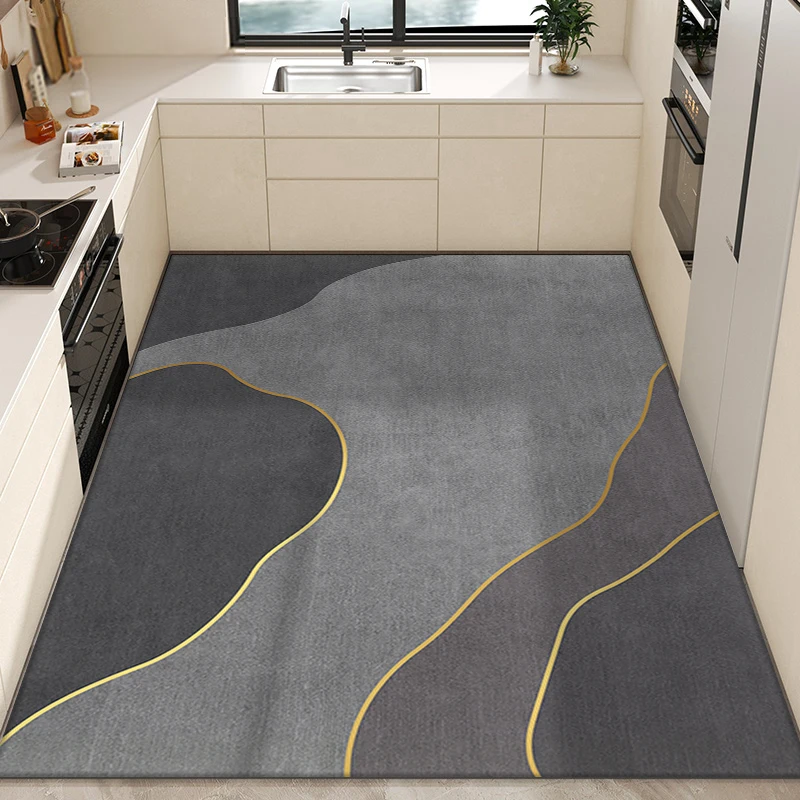 Here are some common varieties:
Here are some common varieties:
There are several types of gel kitchen mats available to suit different needs and preferences. Here are some common varieties:
Gel-filled Mats:
These mats have a gel-filled core, providing cushioning and support for individuals standing for long periods in the kitchen. Gel-filled mats are often made with a combination of gel and foam or rubber for added durability and comfort.
Gel Anti-Fatigue Mats:
These mats are specifically designed to reduce fatigue and discomfort associated with prolonged standing. They feature a gel layer that absorbs pressure and provides a cushioned surface, helping to alleviate foot and leg fatigue.
Gel Wellness Mats:
Wellness mats combine gel with other materials to offer additional health benefits. They are engineered to promote proper posture, reduce pressure on joints, and provide ergonomic support. These mats are often thicker and offer greater cushioning for added comfort.
Gel Kitchen Floor Runners:
These longer, rectangular mats are commonly placed in high-traffic areas, such as in front of sinks or stoves. They provide cushioning and support for individuals in targeted areas, helping to reduce fatigue and discomfort.
Gel Decorative Mats:
These mats not only offer comfort and support but also add a decorative touch to the kitchen. They come in various designs, patterns, and colors, allowing you to find a mat that complements your kitchen decor.
Gel Interlocking Mats:
These mats are designed to be modular, allowing you to connect multiple pieces to create a custom-sized mat. They are ideal for kitchens with unique layouts or larger areas that require coverage. Interlocking mats offer flexibility and can be easily rearranged or expanded as needed.
When choosing a gel kitchen mat, consider factors such as size, thickness, design, and intended use to find the type that best suits your needs and preferences.
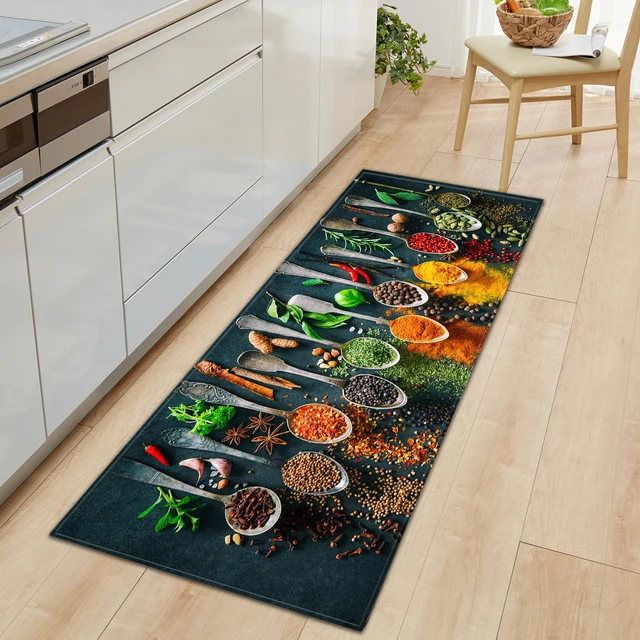 Benefits of Gel Kitchen Mats
Benefits of Gel Kitchen Mats
Enhanced Comfort and Support:
Gel mats provide a cushioned surface that reduces strain on your feet, legs, and back, keeping you comfortable while you cook, clean, or stand for extended periods.
Relief from Pain and Discomfort:
By effectively reducing pressure on your feet and joints, gel mats can alleviate pain, fatigue, and discomfort, allowing you to focus on your kitchen tasks.
Improved Safety:
Gel mats are often equipped with non-slip or slip-resistant surfaces, minimizing the risk of accidental slips and falls in the kitchen.
Their stability ensures peace of mind, especially in busy or fast-paced cooking environments.
Shock Absorption:
Gel mats absorb shock and impact, reducing the stress placed on your body while standing or walking on hard kitchen floors.
They act as a protective barrier, minimizing the strain on your joints.
Considerations When Choosing Gel Kitchen Mats
Size and Shape:
Consider the dimensions of your kitchen and the available space for a gel mat.
Select a size and shape that suits your kitchen layout and provides ample coverage in your work areas.
Thickness and Density:
Gel mats come in various thicknesses and densities.
Determine your desired level of cushioning and support by choosing a mat that suits your preferences and comfort needs.
Maintenance:
Look for gel mats that are easy to clean and maintain.
Mats with a removable cover or stain-resistant properties simplify cleaning and help keep your kitchen environment hygienic.
Styling and Design Options
Colors and Patterns:
Gel mats are available in a variety of colors and patterns to suit different kitchen aesthetics.
Choose a mat that complements your kitchen decor, adding a touch of style and personality to your space.
Versatility:
Gel mats are not limited to just kitchens; they can be used in laundry rooms, standing desks, or any area where extended standing occurs.
Select a mat that can seamlessly transition between different spaces.
Placement and Care Instructions
Proper Placement:
Place gel mats in areas where you frequently stand or walk, such as in front of the stove, sink, or prep area.
Ensure the mat is positioned securely to prevent tripping hazards.
Cleaning and Maintenance:
Follow the manufacturer’s instructions for cleaning and maintenance.
Regularly clean the mat using non-abrasive cleaners, and wipe up spills promptly to maintain its appearance and performance.
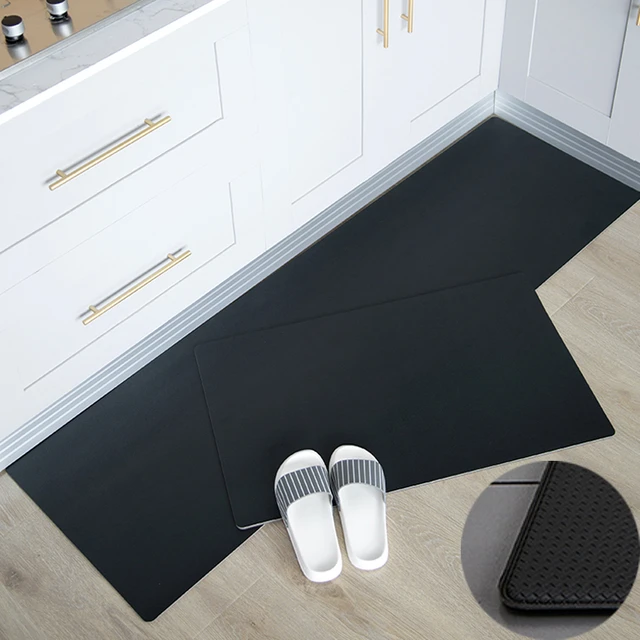 While gel kitchen mats offer several benefits, they also have a few disadvantages to consider:
While gel kitchen mats offer several benefits, they also have a few disadvantages to consider:
Durability:
Gel mats may not be as durable as other materials, such as rubber or foam. Over time, they can deteriorate or develop cracks, especially if exposed to heavy objects or sharp utensils. This can reduce their lifespan compared to other mat options.
Cleaning and Maintenance:
Gel mats can be more challenging to clean and maintain. Some models may require regular vacuuming or shaking to remove debris, while others may need more extensive cleaning methods. Additionally, spills or stains on the mat surface may require specific cleaning products or techniques to avoid damaging the gel material.
Heat Retention:
Gel mats can retain heat, which may be uncomfortable during extended periods of standing in a hot kitchen. This can cause discomfort and potentially lead to fatigue or sweat accumulation. It is important to consider the ambient temperature of your kitchen and personal preferences when deciding on a mat material.
Limited Design options:
Compared to other mat materials, gel mats may have more limited design options. They often come in simple, solid colors or basic patterns. If aesthetics and visual appeal are essential, alternative mat materials may offer more variety in design and style.
Cost:
Gel kitchen mats can be more expensive than other mat options, such as foam or rubber. Although they offer comfort and support, the higher cost may deter some individuals who are looking for a more budget-friendly choice.
It is crucial to weigh the pros and cons of gel kitchen mats before making a purchasing decision. Consider your specific needs, preferences, and kitchen environment to determine if the benefits outweigh the disadvantages for your particular situation.
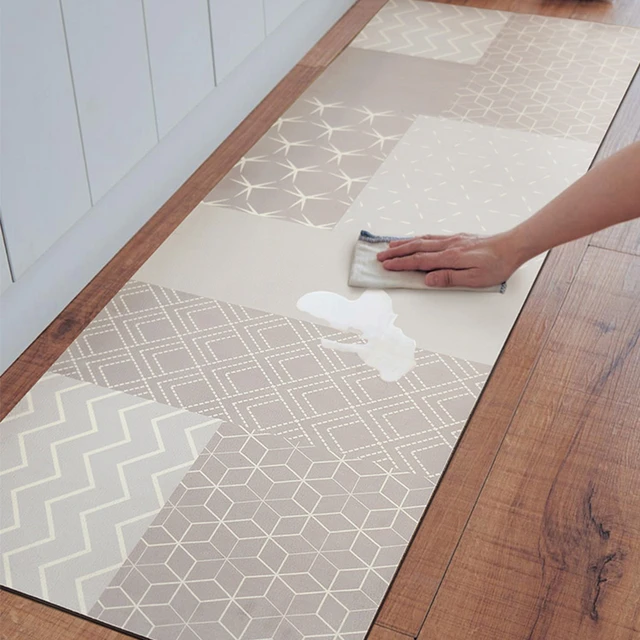 Conclusion:
Conclusion:
Gel kitchen mats provide exceptional comfort, support, and safety for anyone spending significant time in the kitchen. With their soft and cushioned texture, these mats alleviate fatigue, reduce pain, and enhance overall well-being. By incorporating a gel mat into your kitchen, you can create a more comfortable and enjoyable cooking environment. Consider the features, benefits, and design options when choosing a gel mat that suits your needs and style. Let the gel mat revolutionize your kitchen experience by providing the comfort and support you deserve.
